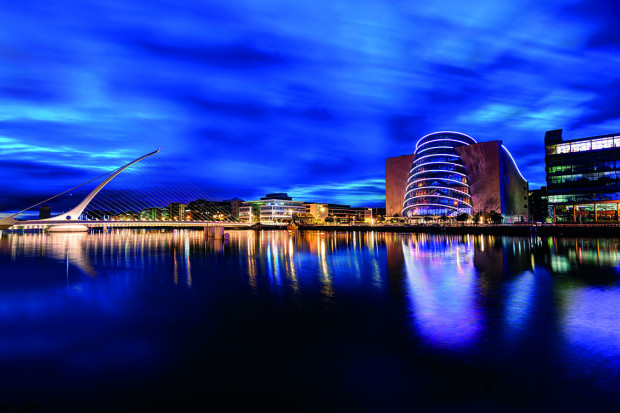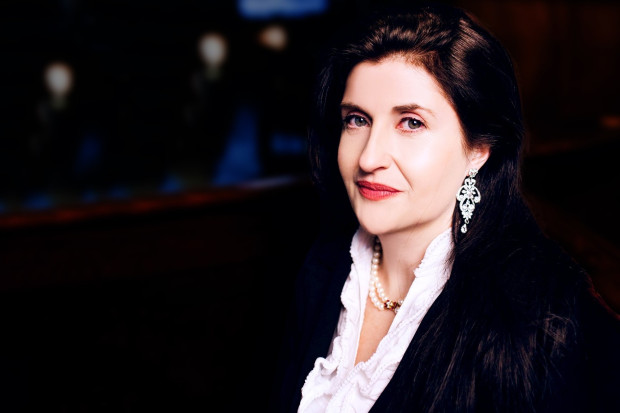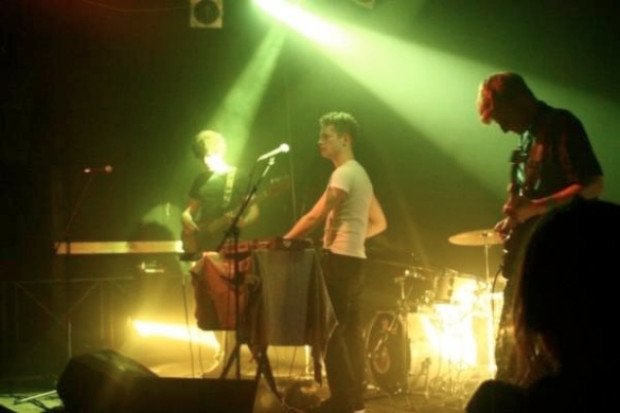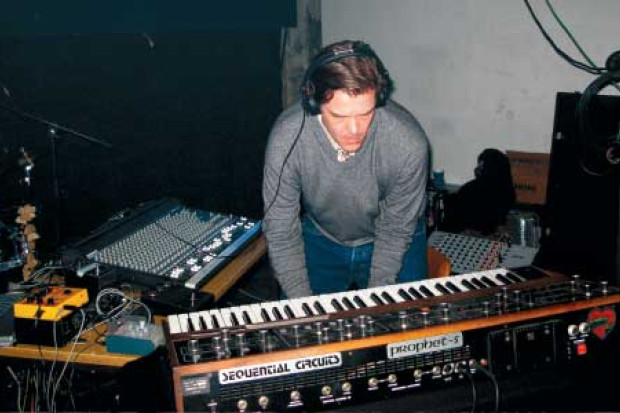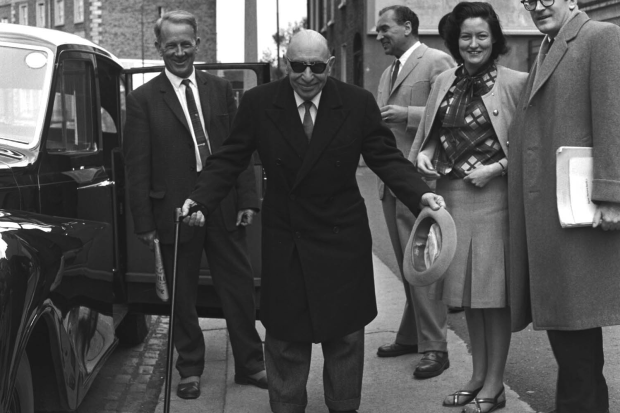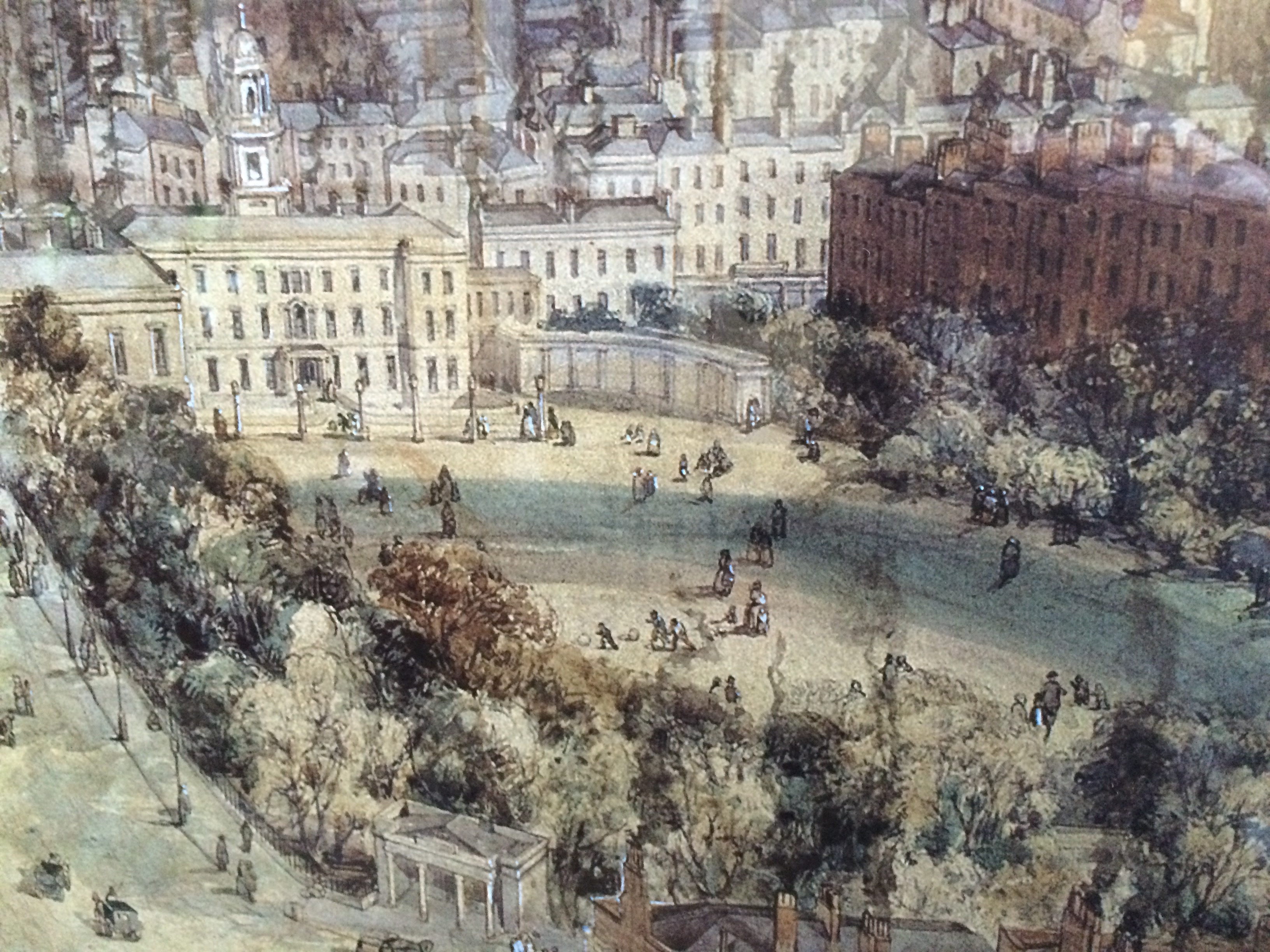
Music in 17th and 18th Century Dublin: Part 1
At the beginning of the seventeenth century, Dublin was a relatively small medieval town, but by the end of that century it had become the second most populous city in the English speaking world: a city in which music flourished. It had, uniquely, two Cathedrals of the established church – Christ Church and St Patrick’s. Both provided employment for musicians, and, because of a system whereby virtually one choir served both institutions, they were able to attract some of the best singers and organists available, the money provided by the double salary being most attractive. It is an interesting fact that most (but of course not all) of the composers active in Dublin during the seventeenth and eighteenth centuries, and indeed well into the nineteenth century, were associated with the two cathedrals. To illustrate the point, we find at the turn of the sixteenth and seventeenth centuries two prominent English composers, John Farmer and Thomas Bateson, working in Dublin.
Farmer was the composer of some exquisite madrigals, best known of which is perhaps ‘Fair Phyllis I saw sitting all alone’. He was appointed Organist of Christ Church Cathedral in 1595. He seems to have been far from exemplary in the performance of his duties, for the Cathedral Chapter issued the following order in July 1597:
It is ordered that if Mr John Farmer doe not return by the first of August 1597, that when all excuses set apart, his place to be void in this Church for departing the land without licence.
This worked for a time at least, but a couple of years later he is in London, probably to supervise the production of his first book of madrigals which came out in 1599. He had a deputy performing his duties in Dublin, but by the end of the year the Chapter, wearying of the situation, had declared the post vacant and appointed a successor.
Thomas Bateson was another English madrigal composer who came to Dublin in 1609 as Organist of Christ Church Cathedral, and Vicar Choral in St Patrick’s. He seems to have remained until his death in 1630. He published two collection of madrigals – in 1604 and 1618.
Another organist of note who came to Dublin later in the seventeenth century was Benjamin Rogers. A minor composer, he was at Christ Church for a couple of years from 1639, fleeing back to England at the onset of the 1641 rebellion.
A figure who was later to make a name for himself in London was John Birchenshaw, who was in the service of the Earls of Kildare up to the Rebellion of 1641, at which he also fled to London. He was a most interesting sort of person, and amongst other claims to fame devised a method of composition by mathematical rule. John Evelyn, the seventeenth century English diarist, relates that he went to London to a concert of
excellent musitians, especially one Mr Berkenshaw, that rare artist who invented a mathematical way of composure, very extraordinary, true as to the rules of art, but without much harmonie.[1]
Samuel Pepys, that other famous seventeenth century English diarist, took music lessons from Birchenshaw in 1661, but on 24 February he wrote in his diary:
I did give him £5 for this month or five weeks that he hath taught me, which is a great deal of money and troubled me to part with it.[2]
A couple of days later he picked an argument with Birchenshaw, and he says:
we fell to angry words, so that in a pet, he flung out of my chamber and I never stopped him, having intended to put him off today whether this had happened or no because I think I have all the rules he hath to give … and it is not for me to continue with him at £5 per month.
Around 1680 the Vicars Choral of the two cathedrals formed the Hibernian Catch Club, presumably as a relief from their religious duties. They met regularly at taverns to sing, causing a certain amount of friction with the church authorities who employed them. The Hibernian Catch Club still flourishes and is the oldest lay musical organisation in Europe.
And so we come towards the end of the seventeenth century, and to a very remarkable composer and musician, or rather a family of musicians: the Roseingraves. Daniel Roseingrave came to Dublin in 1698, he had been a boy chorister at the English Chapel Royal under Captain Cooke and is said to have subsequently studied with both Henry Purcell and John Blow. Before his appointments to the Dublin Cathedrals he had been, in succession, organist at Gloucester, Winchester and Salisbury Cathedrals. He was it seems a somewhat fiery and perhaps unstable person, for he had been in trouble in those Cathedrals for assaulting some of his colleagues. He wasn’t long in Dublin before he had a fight with Robert Hodge who was his predecessor as Organist at St Patrick’s and was then the Master of the Choristers at Christ Church. They were ordered to appear before the Dean and Chapter of St Patrick’s for using ‘very scurrilous language and for fighting together at a tavern’. Roseingrave as the ‘first and chief aggressor’ was fined £3 and Hodge £1. At Christ Church, Daniel assaulted Thomas Finnell during a service. He actually cut off Finell’s ear with his sword, and was, not surprisingly, suspended! The suspension was subsequently redeemed with a fine. The Dean and Chapter of Christ Church on this occasion ordered that
From henceforth no Vicar or Stipendiary of this Church do wear a sword, under penalty of expulsion.
A reasonable enough edict I should think! Incidentally, Finnell had been the Organist at Christ Church before Roseingrave’s appointment, which may explain the rancour between the two.
Both Burney and Hawkins spoke highly of the compositions of Daniel, but unfortunately only four of them seem to have survived, two secular songs and two church anthems, all of them fine pieces.[3]
Daniel had two sons, Thomas and Ralph. Ralph succeeded him as organist at the two Cathedrals and a large number of his compositions have survived. There are many anthems and services by him preserved in the fine eighteenth century manuscript library of Christ Church Cathedral, Dublin.[4] Ralph Roseingrave published only a handful of songs during his lifetime, some songs with religious themes, including ‘A Hymn on the Nativity’ and a beautiful secular song ‘Fairest Charmer’.[5]
Daniel Roseingrave’s other son, Thomas, achieved much more fame and indeed notoriety during his lifetime than either his father or brother. He was also a quite prolific composer, and a large number of his compositions are extant. At an early age it seems that Thomas’s talent showed itself, for in 1709 the Dean and Chapter of St Patrick’s decided that:
whenever Thomas, sonn of Daniel Roseingrave, the present organist of the said Cathedral, being minded to travel beyond the seas to improve himself in the art of music, and that hereafter he may be useful and serviceable to the said Cathedral, that tenn guineas be by the Proctor of the said Canonry given him as a guift from the said Canonry towards bearing his charge.
Thomas wasted very little time, for the next year he set off for Italy. While in Venice on his way to Rome, he encountered Domenico Scarlatti. Scarlatti’s playing made a huge impression on him, and in fact the only contemporary description of Scarlatti’s performance is by Thomas Roseingrave. He had this to say:
When he began to play, I thought ten thousand devils had been at the instrument; I never heard such passages of execution and effect before. The performance so surpassed my own and every degree of perfection to which I thought it possible I should ever arrive, that if I had been in sight of any instrument with which to have done the deed, I would have cut off my own fingers. Indeed so badly was I affected that I did not touch the instrument myself for a month.[6]
A highly coloured account, but one which surely shows signs of the mental instability to come and from which he was to suffer for the rest of his life. After this first encounter the two became very close and Roseingrave followed Scarlatti to Rome and then to Naples, remaining in his company, for the most part, until returning to London in 1717. There he set up as a teacher, performer and composer. He became the first organist of a new fashionable London Church, St George’s, Hanover Square, which was Handel’s local church. The appointment was decided by public competition, which Roseingrave won on the strength of his powers of extemporisation on a theme given by Handel for the purpose. He was only a short time at St George’s before he began to suffer a certain mental instability which must have been very alarming for the congregation who we are told were ‘chiefly persons of rank and fortune’. Burney describes the cause of the problem in a somewhat florid passage that recounts how
Roseingrave having fixed his affections on a lady of no dove-like constancy, was rejected by her at a time he thought himself most secure of being united with her forever.
He goes on to say that
after this misfortune Roseingrave was never able to bear any kind of noise without great emotion. If during his performance on the organ at Church, anyone near him coughed, sneezed or blew his nose with violence, he would instantly quit the instrument and run out of the church seemingly in the greatest pain and terror.[7]
Sir John Hawkins (in his usual style) is much more prosaic about Roseingrave’s problems:
With few other motives than the love of his art, Roseingrave pursued the study of music with intense application, but … greatly to the injury of his mental faculties… [8]
Despite his extraordinary behaviour, Thomas Roseingrave, much to the credit of the authorities, remained as organist of the church for a number of years, being given a pension when finally replaced in 1737. He returned to Dublin in 1751. As Mrs Delaney, in a letter written in Dublin in January 1753, succinctly put it:
Mr Roseingrave … who was sent away from St George’s on account of mad fits, is now in Ireland.
Despite all this, Thomas Roseingrave kept up a steady stream of excellent compositions. His works include a lot of keyboard music, flute sonatas, songs, cantatas and some rather large scale choral works and an opera.
The output of this family of composers is of considerable significance and I should say that there is a great deal of confusion in their entries in the British Union Catalogue of Early Printed Music in relation to the entries under these three composers, with much of the music attributed incorrectly.
Because Dublin was a capital city a state orchestra was maintained, based in Dublin Castle. It provided music for state occasions and the musicians would find employment in the various concert halls and theatres and sometimes the churches and cathedrals in the city. So it is not surprising that Handel was persuaded to go to Dublin and spend time there in 1741/42, a visit which culminated in the first performance of Messiah on 13 April 1742. He was not alone however as many other famous and celebrated musicians such as Francesco Geminiani (who had been a pupil of Corelli’s), Mathew Dubourg (who had been a pupil of Geminiani’s), Michael and Thomas Augustine Arne and others were attracted to Ireland because of this and stayed here for substantial periods. Geminiani in fact died in Dublin in 1762, in his lodgings on or near Dame Street. Both Hawkins and Burney had it that he died from the trauma associated with the theft of the manuscript of a book he had just completed. On the other hand it must be pointed out that he was 82 years of age, which was very advanced for those times. His last concert was given in the great Musick Hall in Fishamble street on 3 March 1760. Mrs Delany, wife of Dean Delany, who had been one of those instrumental in bringing Handel to Ireland some twenty-one years previously, was at the concert and wrote in a letter the following day that
The music began at half an hour after seven; I was extremely pleased with it: there is a spirit of harmony and prettiness of fancy which no other music (besides our dear Handel’s) has… [9]
Incidentally, Geminiani also sold paintings as a sort of side-line! He had held auctions that same year in February and March.
Another source of income for musicians was provided by private performances in the big (and often not so big) houses, both in the city and around the country, where often ‘gentlemen’ (amateur musicians) would play side by side with professionals. There are several accounts of such performances. Very frequently there would be one or two harpers taking part in these gatherings representing a strand of music of very ancient Irish origin. And of course the harping tradition was a very important element in the social and musical fabric of the country, urban and rural. To go to Mrs Delany once more, in June 1745, just two years after her marriage to Dr Delany, she writes:
We have got an Irish harper in the house, who plays a great variety of tunes very well; he plays to us at our meals, and to me whilst I am drawing… [10]
Other elements in the musical mix were the Italian opera, which was very popular throughout the eighteenth century and the vogue for ballad operas. Many ballad operas were produced by Irish writers and composers throughout the eighteenth century. Also there were many series’ of concerts, run in aid of various charities, which provided employment for local and visiting professional singers and instrumentalists.
Part 2 of this article will appear in the March/April issue of JMI.
Notes
1. John Evelyn Diary: 6th August 1664
2. Samuel Pepys Diary 27th February 1661 - 62
3. I have edited them for performance and the two songs, ‘Celia, conscious of her beauty’ and ‘This mercenary age, despise’ may be heard, sung by Frank Dunne, on The Douglas Gunn Ensemble’s CD of music by members of the Roseingrave family, Music from 18th Century Ireland. Vol.1: Music by Daniel, Thomas and Ralph Roseingrave (mm CD 101).
4. where I was Lay Vicar Choral and Keeper of the Dean’s Music (Choir Librarian) about 44 years ago.
5. both included on the above mentioned CD
6. Quoted by Charles Burney in A General History of Music (London 1776)
7. Ibid.
8. Sir John Hawkins A General History of the Science and Practice of Music (London 1776)
9. Quoted in Letters from Georgian Ireland: The correspondence of Mary Delany 1731- 68 Edited by Angélique Day, Friars Bush Press, Belfast 1991. See also Autobiography and correspondence of Mary Granville (Mrs. Delany) vols i - vi, by Lady Llanover, London 1861 - 62.
10. Quoted in Letters from Georgian Ireland: The correspondence of Mary Delany 1731- 68
Published on 1 January 2003
Douglas Gunn specialises in early music and is perhaps best known for his work with the Douglas Gunn Ensemble. He has made a special study of music by Irish composers of the 17th and 18th centuries and has arranged, performed and recorded much of Carolan's music. He is also a composer.












